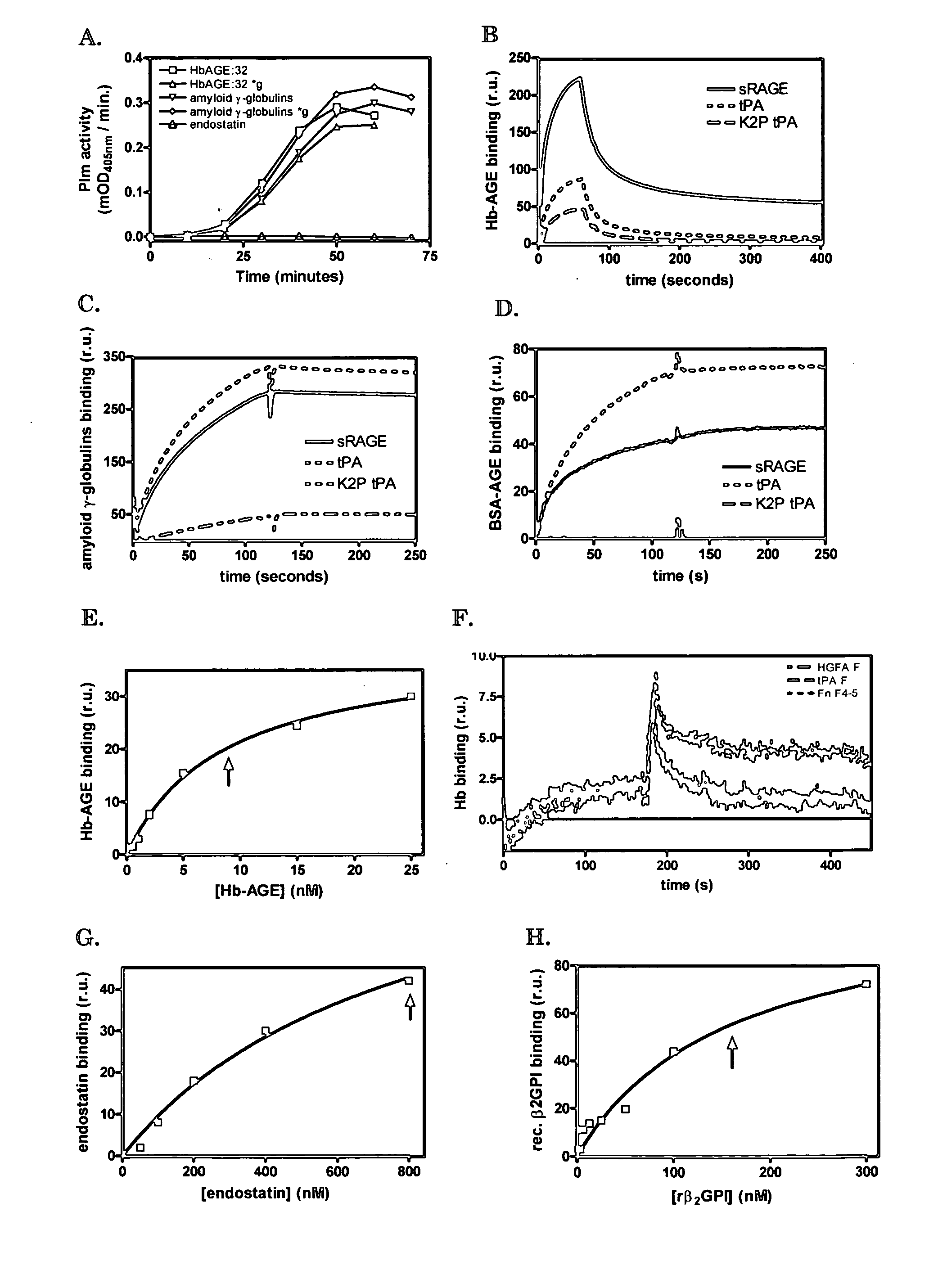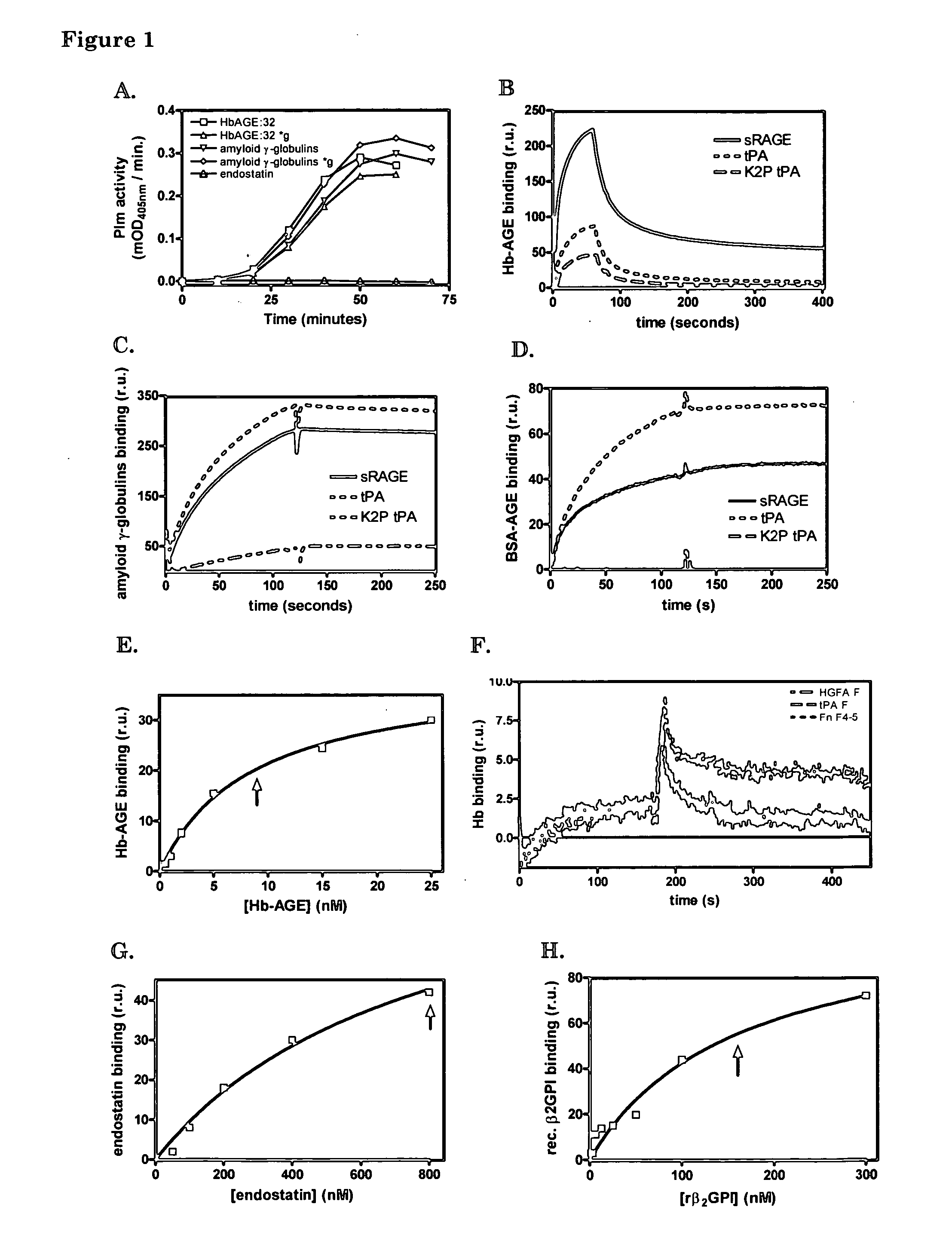Method for detecting and/or removing protein and/or peptide comprising a cross-beta structure from an aqueous solution comprising a protein
- Summary
- Abstract
- Description
- Claims
- Application Information
AI Technical Summary
Benefits of technology
Problems solved by technology
Method used
Image
Examples
example 1
Protein Assemblies with Cross-β Structure Bind to Immobilized Fibronectin Type I Domains in a Biacore Surface Plasmon Resonance Set-Up
[0089] We used a surface plasmon resonance set-up of Biacore to test whether immobilized proteins with affinity for cross-β structure can capture amyloid-like polypeptides from solution under flow. This set up also allows testing of suitable elution buffers to disrupt the interaction. In this way insight into suitable methods to deplete proteins with cross-β structures from solutions is obtained, as well as insight into how to compete for the interaction of cross-β structure binders, which are, for example, immobilized on beads in a column, with proteins comprising cross-β structures.
[0090] On one chip, we immobilized sRAGE, tPA and K2P-tPA. One channel was left empty for reference purposes. Protein solutions were centrifuged for 10 minutes at 16,000*g before the solutions were applied to the Biacore chip. Centrifugation had no effect on the stimul...
example 2
Protein Solutions Contain Protein Aggregates with Cross-β Structure
Structural Analysis of Proteins in Solution
[0093] We analyzed a series of protein solutions that are used as therapeutics for human use for the presence of cross-β structures in the protein. Protein solutions were stored at −20° C., 4° C. (as recommended by the manufacturers), room temperature, 37° C. or 65° C. Fluorescence of Congo red and ThT in the presence or absence of the proteins was analyzed, as well as tPA binding, tPA activation and factor XII activation. For fluorescence assays, 10 μg ml−1 Aβ(1-40) E22Q amyloid was used as a positive control and gave typical values of approximately 1250 and 1800 A.U., respectively in the Congo red- and ThT fluorescence assay. Furthermore, TEM images were recorded to get insight whether amorphous aggregates are formed or fibrillar like structures.
[0094] Gelatin, Cealb, FVIII and to some extent GH, stored at the recommended storage temperature of 4° C., enhanced the flu...
example 3
Structure Analysis of Various P2-glycoprotein I Preparations
Factor XII and tPA Bind to Recombinant β2GPI and to β2GPI Purified from Frozen Plasma, but not to β2GPI Purified from Fresh Plasma
[0097] Recombinant β2GPI, but not β2GPI purified from fresh plasma stimulate tPA-mediated conversion of Plg to Pls, as measured as the conversion of the Pls-specific chromogenic substrate S-2251 (FIG. 3, Panel A). An ELISA demonstrated that tPA and factor XII bind recombinant β2GPI, but not to β2GPI purified from fresh human plasma (FIG. 3, Panels B, C). Recombinant β2GPI binds to factor XII with a kD of 20 nM (FIG. 3, Panel C) and to tPA with a kD of 51 nM (FIG. 3, Panel B). In addition, factor XII co-elutes from the anti-β2GPI antibody affinity column with β2GPI, which was purified from plasma that was frozen at −20° C. and subsequently thawed, as shown on Western blot after incubation of the blot with anti-factor XII antibody (FIG. 3, Panel D). This shows that β2GPI refolds into a conforma...
PUM
| Property | Measurement | Unit |
|---|---|---|
| Structure | aaaaa | aaaaa |
Abstract
Description
Claims
Application Information
 Login to View More
Login to View More - R&D
- Intellectual Property
- Life Sciences
- Materials
- Tech Scout
- Unparalleled Data Quality
- Higher Quality Content
- 60% Fewer Hallucinations
Browse by: Latest US Patents, China's latest patents, Technical Efficacy Thesaurus, Application Domain, Technology Topic, Popular Technical Reports.
© 2025 PatSnap. All rights reserved.Legal|Privacy policy|Modern Slavery Act Transparency Statement|Sitemap|About US| Contact US: help@patsnap.com



